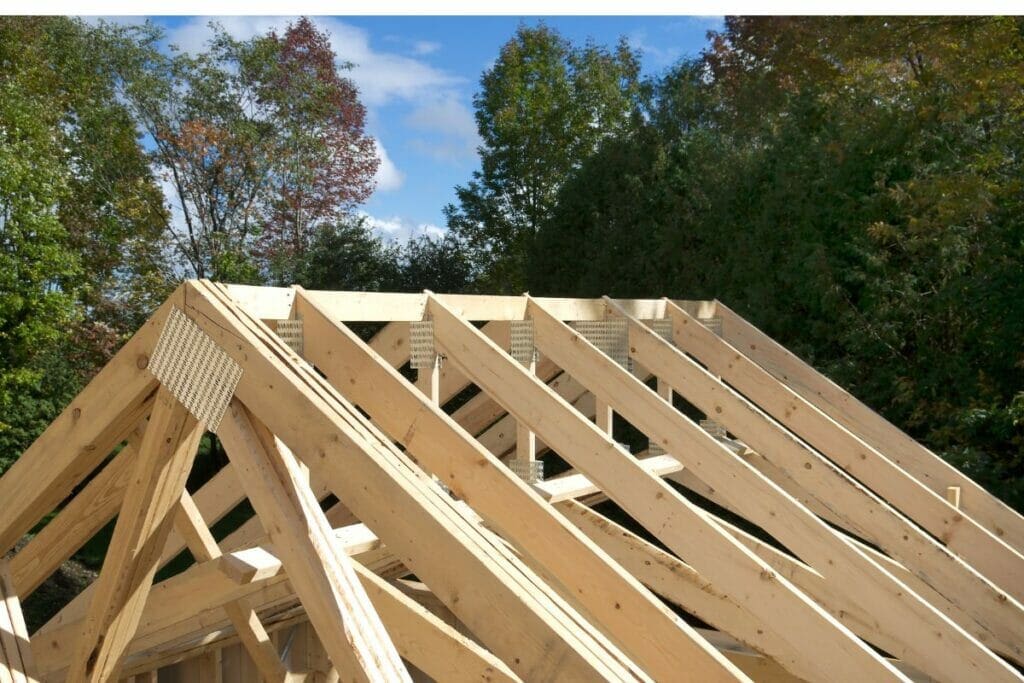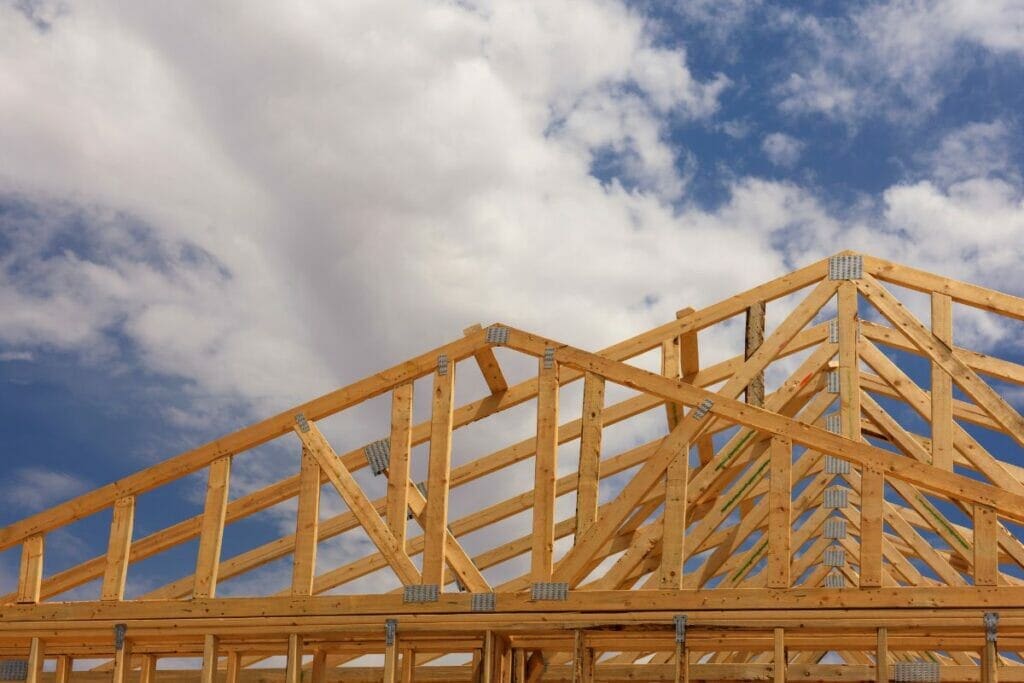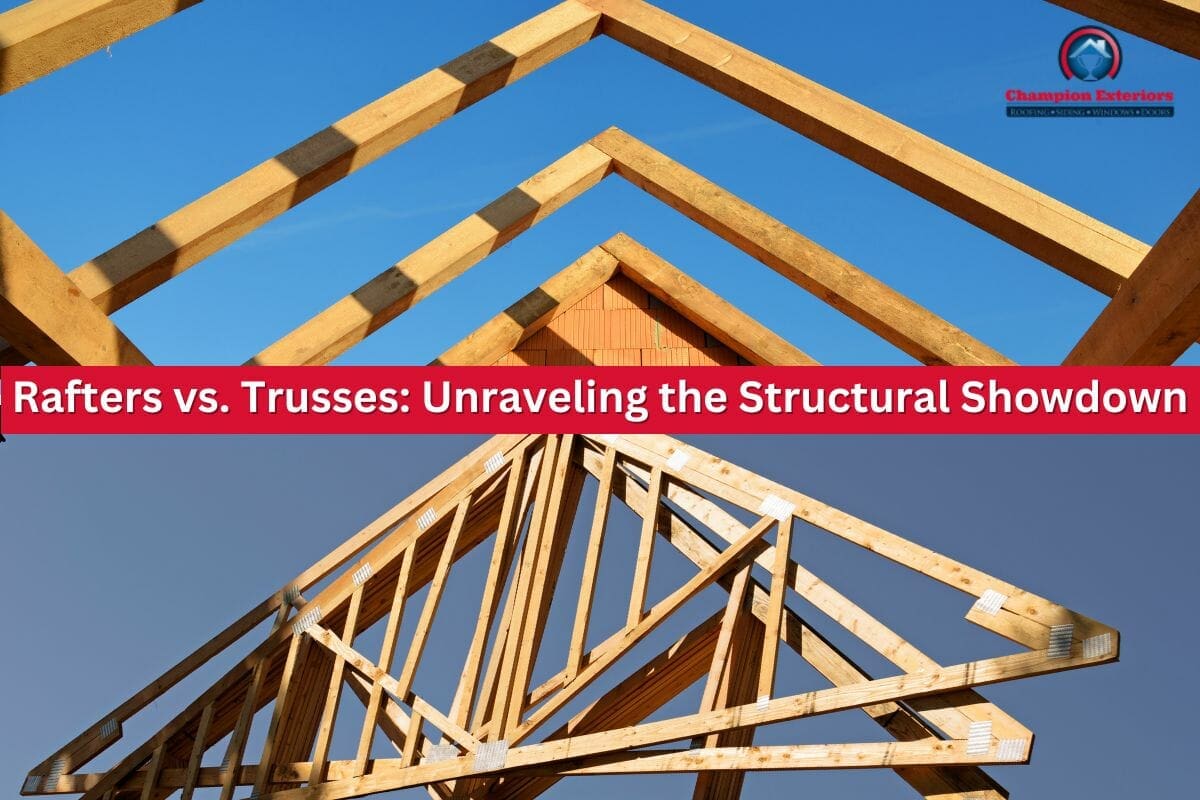Are you planning to install a new roof on your home or office? If yes, you might have encountered terms such as roof rafters and trusses. Roof rafters and trusses serve the same purpose, though they are slightly different in design, effectiveness, cost, and strength. Choosing the right option for your property can be intimidating, and many homeowners may lose patience when they try to choose between the two.
But don’t worry, we are here to help. In this blog post, we will help you make the decision between rafters and trusses. Both options have their own unique advantages and disadvantages, and it’s important to understand the differences before making a final decision. We will explore the ins and outs of rafters vs. trusses, comparing them in terms of cost, ease of installation, strength, and design options.
Understanding Roof Rafters

Roof rafters are a fundamental component of traditional roof framing. They are sloped structural pieces made of wood that extend from the ridge or hip to the wall, eave, or perimeter of the building. Rafters provide support for the roof deck, shingles, and other roofing materials.
In stick-framed roofs that are built on-site, rafters are custom-cut by professional roofers. They are arranged side by side, creating a sturdy framework that supports the roof. Ceiling joists secure the rafters and connect them to the exterior walls, while a ridge board or ridge beam provides additional support at the highest point of the rafters.
Rafters are flexible in terms of design and can be modified during the building process to suit specific needs. They are perfect for locations that are hard to reach, as they can be built on-site regardless of transportation limitations. Additionally, rafters provide more space in your home, allowing for attic conversions or vaulted ceilings.
However, there are some drawbacks to using rafters. Considering the labor and materials required for on-site construction, they can be more expensive than trusses. The building process can also be time-consuming, especially when dealing with varying weather conditions. Furthermore, constructing rafters requires skilled carpenters, and finding professionals experienced in rafter construction might be challenging.
Exploring the World of Roof Trusses

Roof trusses offer a different approach to roof framing. They are prefabricated wooden structures made in a factory and delivered to the construction site ready for installation. Trusses consist of top chords, bottom chords, and web bracing, forming a triangular web pattern that provides support for the roof.
Trusses have gained popularity due to their cost-effectiveness and structural strength. They offer superior span capabilities, allowing for wider distances between load-bearing walls compared to rafters. Trusses are designed to distribute weight and provide stability, making them an efficient option for roof framing.
The prefabrication of trusses ensures consistent quality and accuracy. They are designed by computers and engineering professionals, eliminating the risk of human error and resulting in precise components that meet building specifications. Trusses are also easier and faster to install compared to rafters, as they can be assembled one after another, reducing construction time and labor costs.
However, one drawback of trusses is that they cannot be modified on-site.
Comparing Roof Rafters and Trusses
To help you make an informed decision between roof rafters and trusses, let’s compare the key factors:
Design Flexibility
Rafters: Rafters offer more design flexibility, allowing for creative architectural features such as vaulted ceilings and open floor plans.
Trusses: Trusses provide less design flexibility due to their prefabricated nature. They are better suited for standard roof designs without complex architectural elements.
Strength and Stability
Rafters: Rafters provide sufficient strength and stability for most residential roofs. However, they may require additional support from load-bearing walls in larger spans.
Trusses: Trusses offer superior strength and stability, allowing for larger roof spans without the need for additional support. They distribute weight more efficiently and can withstand heavier roof materials.
Installation Time
Rafters: Rafters can take longer to install because they require on-site construction. Inclement weather conditions can further delay the installation process.
Trusses: Trusses are quicker to install as they are prefabricated off-site. They can be delivered and installed efficiently, reducing construction time.
Cost
Rafters: Rafters tend to be more expensive than trusses due to the labor and materials involved in on-site construction.
Trusses: Trusses are generally more cost-effective than rafters. While there may be upfront costs for manufacturing and delivery, trusses require less labor and material overall.
For more information, read our blog post : How Much Does A New Roof Cost?
Customization
Rafters: Rafters can be modified on-site to accommodate small adjustments or specific design requirements.
Trusses: Trusses are not customizable on-site and must be manufactured based on specific design specifications.
Making the Right Choice
When deciding between roof rafters and trusses, it’s essential to consider factors such as design flexibility, structural strength, installation time, and cost. If you prioritize design flexibility and are looking for customized architectural features, rafters may be the better option. On the other hand, if weight bearing, cost-effectiveness, and quicker installation are your priorities, trusses are likely the more suitable choice.
Conclusion
When it comes to roof framing, roof rafters, and roof trusses have their own pros and cons. Rafters provide more design and customization options, while trusses offer sturdiness, affordability, and faster installation. Ultimately, the choice between rafters and trusses depends on your specific project requirements, budget, and design preferences. Consulting with a roofing professional can help you make an informed decision and ensure a successful roof-framing solution for your home.
Are You Planning To Install A New Roof On Your Home Or Office In New Jersey?
Are you considering installing a new roof on your home or office? If yes, consider Champion Exteriors, a renowned roofing company in New Jersey, to install your roof. We have a team of expert and skilled roofers who you can trust and rely on. Call us today at (609) 845-3576 and consult a professional about your roofing project.


